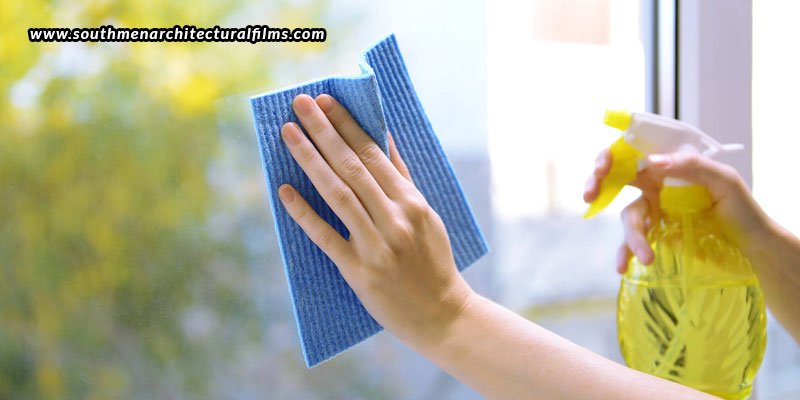Window safety films are a wise investment if you want to improve the energy efficiency, security, and UV protection of your space. To guarantee that these films function well and maintain their aesthetic throughout time, proper upkeep and cleaning are crucial. This thorough guide will help you keep your window safety films in top condition by covering common mistakes to avoid, safe materials to use, and best methods for cleaning and maintaining them.
Best practices for cleaning and maintaining window safety films
Regular cleaning
Maintaining the pristine condition of your window safety films will help to keep dirt and grime from building up. Try cleaning the films every one to three months, depending on your surroundings. Areas with heavy traffic or substantial dust or pollution may need to be cleaned more often. Use a sponge or a mild, lint-free microfiber cloth to clean the surface. Steer clear of anything abrasive that might scratch or harm the film. To remove dirt and debris, gently wipe the film in a circular motion without using too much pressure.
Washing and drying
While just a little amount of water is required for cleaning the film, try not to use too much as this might cause the film’s borders to leak. Overly wet conditions might weaken the glue and eventually lead to peeling or bubbling. Make sure the film is completely dry after washing by using a fresh, dry microfiber cloth. This keeps water stains and streaks off the surface of the film. The cleaning solution may dry too rapidly and produce stains if the film is cleaned in bright sunshine, so clean your film when the temperature is cooler or when your windows are in the shade.
Inspecting the film
Check the film occasionally for damage indicators like bubbles, scratches, or peeling edges. Early resolution of minor difficulties can stop them from growing into bigger concerns. Consider getting the film examined and repaired by a professional if you see significant damage or problems. They can guarantee that any required repairs are done appropriately and offer knowledgeable guidance.
Common mistakes to avoid
Using abrasive materials
Scrubbing pads, rough cloths, and abrasive sponges should not be used on the film since they can damage the surface and ruin the look. To avoid damage, use gentle, non-abrasive cleaning tools only.
Using incorrect cleaning products
When cleaning supplies not made for window films are used, the film may get damaged due to chemical interactions. Products that include strong solvents or abrasives that might erode the adhesive or surface of the film should be avoided.
Applying excessive force
When cleaning, too much pressure might cause damage to the film or cause it to come off the glass surface. So, take care not to push too hard when cleaning the film.
Neglecting drying
Water stains and streaks may appear on the film if it is not thoroughly dried after cleaning. Make sure the film is totally dry by using a clean, dry microfiber towel every time.
Cleaning in direct sunlight
Cleaning in direct sunlight may result in stains and uneven cleaning because the cleaning solution dries too rapidly. Choose a time when the windows are not being directly illuminated by the sun.
Ignoring manufacturer’s instructions
The manufacturer may give special care recommendations for different window safety films. Ignoring these recommendations may result in harm or poor upkeep. Always follow the cleaning and maintenance instructions provided by the manufacturer.
Products That Are Safe to Use on Window Safety Films
Mild dish soap
A safe and efficient cleaning option is a small amount of dish soap diluted with water. Use sparingly, and make sure you rinse it out completely to prevent residue accumulation.
Microfiber cloths
Microfiber towels that are soft and lint-free are perfect for cleaning window films. They assist in removing filth and grime without scratching the film’s surface since they are soft on it.
Soft sponges
If a towel isn’t enough for cleaning, non-abrasive sponges can be utilized. Make sure there are no abrasive particles on the sponge and that it is clean.
pH-balanced cleaners
Regular use of pH-balanced solutions made especially for window films is safe. Without causing any harm to the film’s surface or adhesive, these cleansers efficiently clean the film.
Ammonia-free glass cleaners
A safe option if you require a ready-made solution is to use glass cleaners free from ammonia. Make sure the product is approved for use on window films and steer clear of those that include strong solvents or abrasives.
Specialty window film cleaning kits
Some manufacturers offer specialty cleaning kits designed to be used with window films. To ensure compatibility and safety, these kits usually contain microfiber cloths and pH-balanced cleansers.
To ensure the longevity and efficacy of your window safety films, you must clean and maintain them well. So, use the above-mentioned tips to help maintain your film. And, to get the finest quality films for your windows, get in touch with Southmen, who offers premium quality window safety films in Bangalore. Their knowledge guarantees that your films stay in excellent shape, improving your windows’ look and functioning while providing peace of mind.




